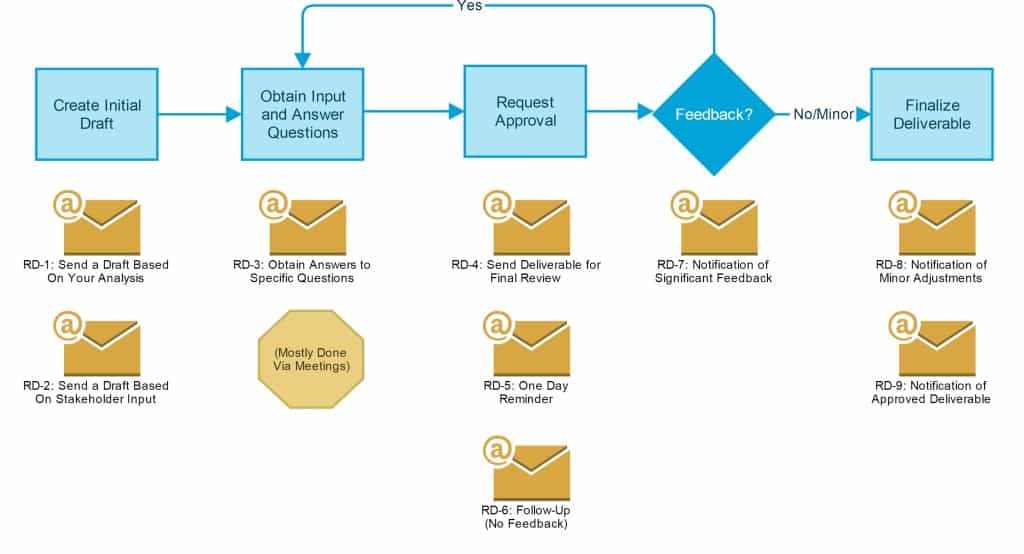One of the things that I wish I’d known when I started out as a business analyst was I would need to take deliberate steps to ensure my stakeholders truly got what they wanted and needed out of the requirements.
As requirements authors and analyzers, it’s really easy to get so wrapped up in the process that you take on more ownership than is prudent. However, when stakeholders do not buy into the requirements, you can expect change requests late in the development cycle and a longer process to put the solution to use.
By methodically seeking feedback at each stage of the requirements process and using email correctly as part of this process, you’ll get critical input on your documentation and ensure your stakeholders embrace the upcoming changes to their processes.
(This is the third installment of a 4-part series going into a little more detail on the things I would have liked to have known before I started my business analyst career.)
Here’s a quick visual map you can use to remember what pieces of communication to consider sending on a project when it comes to the 4 steps to finalize a requirements document.
Click here to download this visual map in PDF format and save it for future use. You also might want to check out our Email Communication Templates for copy-and-paste email templates covering each of the scenarios discussed here.
Now, let’s take a closer look at how we can get the input we need on a requirements document.
Step 1 – Create an Initial Draft
To create a first draft, the business analyst may do independent research or meet with stakeholders to seek their high-level input.
Either way, the first draft is not the final draft – ever. Yet it is sensible to send an early draft out for review, as this can help get questions answered and move the requirements process along.
The important thing when sending out an early draft for review is to emphasize that this is indeed a working draft and that stakeholder input is still required. Highlighting specific questions you have and identifying next steps can help manage stakeholder expectations.
Step 2 – Obtain Input and Answer Questions
Once the first draft is complete, you’ll need to obtain additional input and get questions answered. Most often, you’ll conduct a requirements walk-through.
On occasion, it may be more efficient to receive answers to key questions via email. In this case, send an email with the specific questions you have and attach the draft copy of your deliverable for more background information.
Step 3 – Send a Deliverable for Final Review
Once a requirements document has been reviewed and key questions resolved, you will have a document that’s ready for final review and approval. Email is a great way to manage this kind of task.
Simply attach the document to your email, explain what’s expected of your stakeholders, communicate a deadline by which you need their feedback or approval, and hit send.
Since stakeholders are busy, plan to remind them before the deadline. Including a description of how their approval helps move the project forward can help them carve out time for this task.
Step 4 – Finalize Deliverable
Once you go through the above steps, sometimes multiple times, you’ll have your approved document. This is a step to communicate (and celebrate)!
Send the final deliverable out to anyone who needs to know about the final document, including those involved in implementing and testing against the specification.
A Quick Synopsis
Reviewing and validating requirements takes a lot of work. Using a clear, consistent, and methodical communication process will keep things running smoothly and ensure your stakeholders have clear expectations about what their contributions should be.
Start with Trusted Email Templates for Reviewing and Finalizing Deliverables

Click here to learn more about the Email Communication Templates

